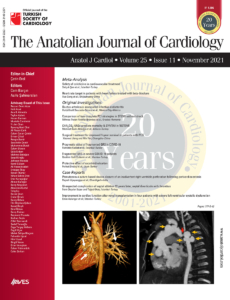Anthropometric indices predicting incident hypertension in an Iranian population: The Isfahan cohort study
Authors
Affiliations
Abstract
Objective: The aim of the present study was to assess different obesity indices, as well as their best cut-off point, to predict the occurrence of hypertension (HTN) in an Iranian population.
Methods: In a population-based study, subjects aged 35 years and older were followed for 7 years. Blood pressure was measured at baseline and after the follow-up. Anthropometry indices included body mass index (BMI), body adiposity index (BAI), the waist-to-height ratio (WHtR), the waist-to-hip ratio (WHpR), and waist and hip circumferences (WC and HC). Logistic regression was employed to calculate the odds ratio (OR) and 95% confidence intervals (CI) per standard deviation (SD) increment. The operating characteristic analysis was used to derive the best cut-off value for each index.
Results: Among original 6504 participants, 2450 subjects who had no cardiovascular diseases (CVD) and HTN at baseline were revisited, and 542 (22.1%) new cases of HTN were detected. There were minimal differences between most indices in the adjusted models; however, the best HTN predictors were BMI (OR per SD 1.32; 95% CI 1.12-1.56) and almost equally WC (1.35; 1.13-1.60) in men and WC (1.20; 1.04-1.39) in women. As a binary predictor, BMI with a cut-off point of 24.9 kg/m2 in men (1.91; 1.40-2.62) and WC with a cut-off point of 98 cm in women (1.57; 1.17-2.10) were the best in adjusted models. WC, WHpR, and WHtR were significantly associated with an increased risk of HTN only in participants whose weight was normal (BMI, 18.5-24.9 kg/m2).
Conclusion: Therefore, BMI in men and WC in women were the best predictors of HTN, both as continuous and binary factors at their appropriate cut-off points.
Keywords: hypertension, adiposity, prediction, incidence
How to Cite
.Anthropometric indices predicting incident hypertension in an Iranian population: The Isfahan cohort study.Anatol J Cardiol
. 2019 Jun;22(1):33-43. doi: 10.14744/AnatolJCardiol.2019.10594. PMID: 31264654.

